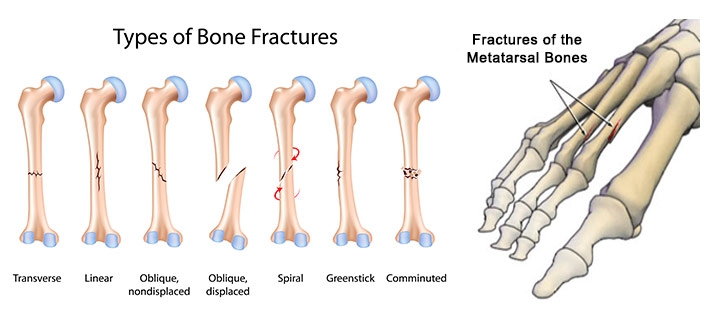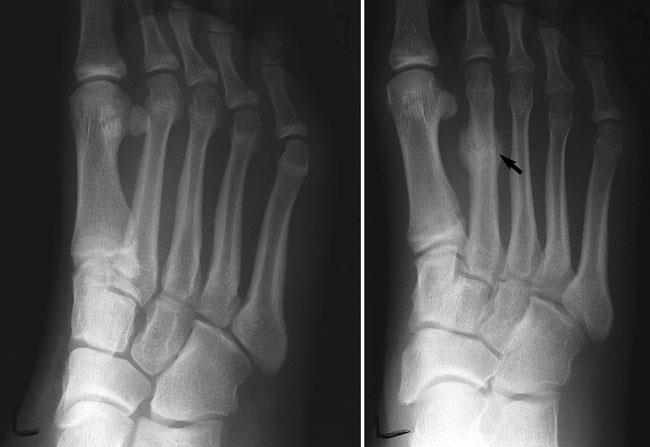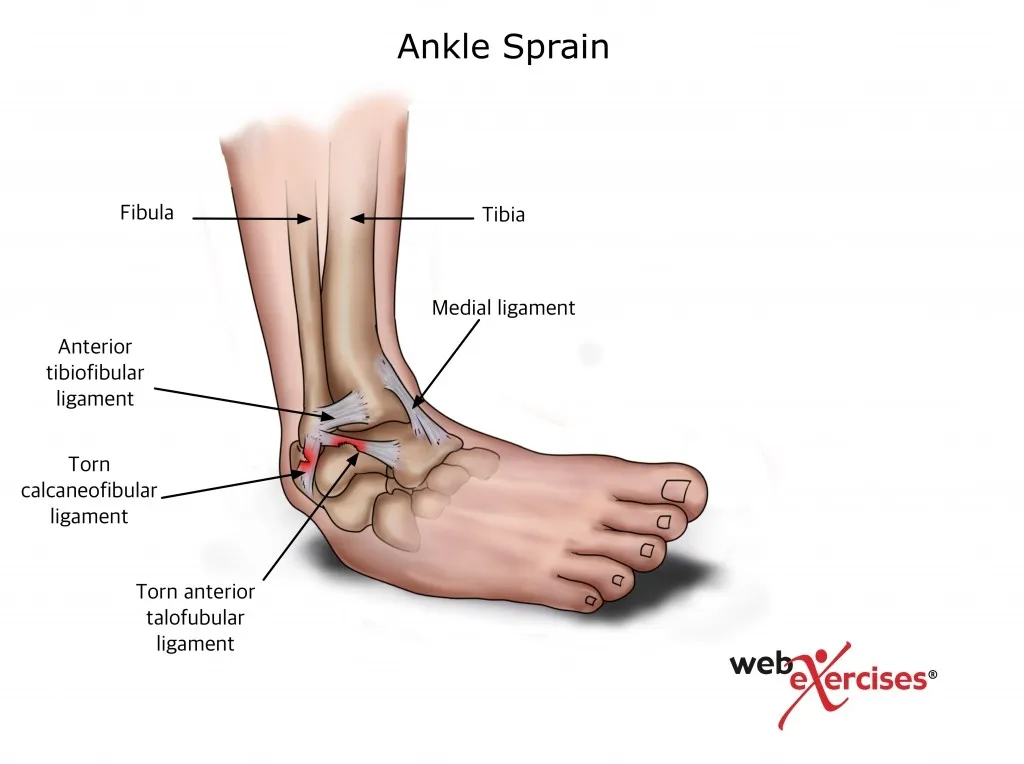
5TH METATARSAL SHAFT FRACTURE
If you twist and injure your foot you may break/fracture the shaft of the 5th metatarsal (long bone behind 5th toe). Sometimes called a Dancer’s fracture since it may occur while standing up on your toes. Treated with casting or surgery depending on the severity o...

TOE AND FOREFOOT FRACTURES
Nearly one-fourth of all the bones in body are in feet, which provide with both support and movement. A broken (fractured) bone in forefoot (metatarsals) or in one of toes (phalanges) is often painful but rarely disabling. Most of the time, these injuries heal without o...

STRESS FRACTURES OF THE FOOT AND ANKLE
Stress fractures are a type of overuse injury. These tiny cracks in bones develop when muscles become overtired (fatigued) and can no longer absorb the shock of repeated impacts. When this happens, the muscles transfer the stress to the bones, creating a small crack or ...

LISFRANC (MIDFOOT) FRACTURE
Lisfranc (midfoot) injuries result if bones in the midfoot are broken or ligaments that support the midfoot are torn. The severity of the injury can vary from simple to complex, involving many joints and bones in the midfoot. A Lisfranc injury is often mistaken for a si...

FRACTURES OF THE HEEL
It’s not easy to break heelbone (calcaneus). Because it takes a lot of force, such as that sustained in a motor vehicle accident or a fall from a height, you may also incur other injuries as well, particularly to the back.
Pain.
An inability to bear weight.
...

FRACTURES OF THE HEEL
It’s not easy to break heelbone (calcaneus). Because it takes a lot of force, such as that sustained in a motor vehicle accident or a fall from a height, you may also incur other injuries as well, particularly to the back.
Pain.
An inability to bear weight.
...

FRACTURE OF THE TALUS
The talus is a small bone that sits between the heel bone (calcaneus) and the two bones of the lower leg (tibia and fibula). It has an odd humped shape, somewhat like a turtle. The bones of the lower leg “ride” on top and around the sides to form the ankle j...

ANKLE SPRAIN
Ankle sprains are caused by an unnatural twisting or force on the ankle bones of the foot, which may result in excessive stretching or tearing of one or more ligaments on the outside of the ankle. The severity of the sprain can impact the degree of damage as well as the...

